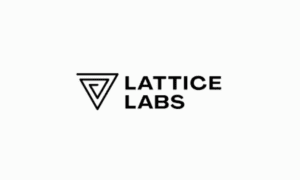Byline: Lucy Motshwane
The world is rapidly advancing and becoming more digital. As more innovations are introduced, systems change – inherently changing life as we know it. In the context of blockchain, not only is this technology revolutionising and transforming the landscape of global finance but blockchain technology is impacting and transforming other sectors, including the health sector – a phenomenon that no one would have thought to be possible. Below we discuss how blockchain technology is bridging gaps in patient care by describing the practical use cases of the technology.
What is Blockchain Technology?
Blockchains are the foundation of the digital asset industry and are further developing into an integral part of other industries. They enable the existence of encrypted data, which is the core of all cryptocurrencies. Essentially, a blockchain is a digital record of transactions, replicated and shared across a network of computers linked to that blockchain. This digital record not only logs information but ensures it’s difficult to alter, compromise, or manipulate. Beyond logging transactions, the primary function of blockchain technology is to decentralise peer-to-peer connections in businesses and entities, simplifying and enhancing the security of trade and service delivery. There are different types of blockchains, all of which function under two categories – public and private blockchains. Public blockchains, often termed permissionless, are open for anyone to join and play a role in verifying transactions and information, making them ideal for networks demanding high transparency. In contrast, permissioned blockchains operate within a closed network, where only specific entities have the right to validate transactions or data on that blockchain.
Types of Blockchain
Blockchains can be categorised into four main types:
- Public Blockchains (Permissionless):
These are entirely decentralised networks where anyone with an internet connection can participate. They’re not owned by any single entity, allowing anyone to access and maintain copies of blocks or nodes. Transactions and records are verified within this type, and they often utilise mechanisms like Proof of Work or Proof of Stake for security. These blockchains can potentially replace traditional financial systems and even support smart contracts to further decentralisation. Bitcoin and Ethereum are notable examples.
- Private Blockchains (Permissioned):
These are more centralised than their public counterparts, typically overseen by a singular authority. Access is restricted, making them ideal for companies looking to secure information without broad public exposure. They find applications in areas like internal audits, voting systems, and asset management. Hyperledger and Corda are examples of such blockchains.
- Hybrid Blockchains (Permissionless):
Integrating the features of both public and private blockchains, hybrids offer a unique blend. Some aspects are overseen by a particular organisation, while others are open to the public. This duality offers solutions for sectors like healthcare, government, real estate, and finance, where data might be publicly accessible yet privately protected. The Ripple network and XRP token exemplify hybrid blockchains.
- Consortium Blockchains (Permissioned):
Also known as Federated Blockchains, these platforms are governed by a group of entities rather than just one. They can both initiate and validate transactions. Balancing the traits of both public and private blockchains, they are designed to meet the specific needs of organizations and are often employed by industries like banking, business, and payment processing that require collaboration.
The Advantages of Using Blockchain in Healthcare
The healthcare industry has challenges with data storage, sharing, and verification. Patient information is often stored separately, making it hard for doctors to access but relatively easier for hackers, as a result, many patients feel as though they don’t own their health information. Plus, fake medicines are becoming a common plague since it’s tough to check where they come from.
It’s clear that old data methods aren’t as effective anymore and that’s where blockchain technology comes into play. Below we list some of the key advantages of using blockchain in healthcare:
- Medical Records: Blockchain can safely keep patient records in a system that’s hard to hack or change.
- Quick Decisions: Since all patient data is in one place that’s always open, hospitals can decide on treatments faster.
- Credentials for Healthcare Workers: Blockchain can speed up the process of giving healthcare workers their required IDs.
- Benefits for Patients: With blockchain tools, only the patient can see their health data. Also, data from health devices can be safely shared with doctors.
- Joining Research: Patients can take part in medical research, and blockchain will help them make money from it. Doctors will also benefit from it because they will have access to more study data.
- Benefits for pharmaceuticals: More people can enrol in clinical trials for new treatments, which benefits pharmaceutical corporations. Information about medications and associated clinical studies will also be accurate and simple to verify because of the unchangeable nature of the blockchain. This allows for easy identification of fake medications, which is another advantage.
- Insurance Benefits: Patients can quickly show they have insurance using blockchain. Additionally, smart contracts can be used to finalise insurance contracts, guaranteeing the security of patient data and providing insurers with convenience.
In addition to the above, according to industry specialists at Bitcoin Apex (read here), research statistics highlight that the global medical blockchain market is projected to reach $55.83 billion by 2026, growing at a CAGR of 35% from 2021. Furthermore, the market for blockchain technology in healthcare is expected to be worth around $126 billion by 2030.
Healthcare organisations save close to $100 billion a year thanks to the implementation of blockchain for streamlining their IT operations.
The amount pharmaceutical and medical device businesses put on blockchain to replace their outdated systems in 2021 was around $242 million. In order to improve their data-related practices, hospitals and other medical facilities are now using blockchain development services.
The Disadvantages of Using Blockchain in Healthcare
While blockchain’s integration into healthcare is gaining momentum and redefining app development, we cannot shy away from the fact that there are limitations that can cause challenges.
We’ve discussed various applications of blockchain in healthcare. However, it’s widely recognized that there’s room for improvement by innovative developers and visionaries. While there are technical barriers, arguably more impactful are the cultural barriers, regulatory frameworks, and legislative concerns. Here are some inherent limitations of introducing blockchain in healthcare:
- As the blockchain expands, transaction processing times can lengthen, leading to potential delays.
- The inability to erase records irrevocably; instead, the network adds new blocks to indicate previous record nullifications.
- Successful integration demands unanimous adoption across all participating entities.
- Handling extensive medical files, like MRI scans, may pose challenges.
- There can be substantial costs associated with planning, development, and upkeep.
Practical Use Cases of Blockchain Technology in Healthcare
1. Patient data management
The most noteworthy example of a blockchain use case in healthcare is patient data management. For instance, someone visiting a hospital can feel much more comfortable handing over things like a social security number and credit card information if they know blockchain encryption is in place. Hackers, in turn, will find it much more challenging to crack a blockchain encryption system.
You’re also looking at reliable storage of personal healthcare data for patients and better accessibility. When someone wants access to their test results, they can set up their account information and find out the results without fearing someone spying on the most intimate details of their life. At the same time, their doctors can access that information easily and without fear of prying eyes.
The integrity of a patient’s medical records is assured through tools such as a patient health information portal, also called a PHI. Electronic health records can easily be transferred to a new doctor and collected through IoT devices that can be compatible with a specific blockchain. Medical insurance claims can easily be processed, as well.
Using healthcare APIs with blockchain technology, it’s the most secure way to protect, especially on a patient’s identity. With an API in place, the patient can decide who should have access to their medical records other than their doctor. They can even dictate whether they want to allow full or partial access.
2. Healthcare transactions control
People can be more confident about their payment details when using blockchain technology as encryption methods, like transparent database encryption, have been introduced and are being implemented to enhance data safety.
Hospitals handle numerous patient claims daily and request unsettled payments. Unauthorised access to this data can lead to problems like identity theft, given the skills some hackers possess. With blockchain, there are fewer claim denials and quicker reporting of underpayments, cutting down on errors and delays. This technology simplifies operations, easing payment worries and making business run smoother for medical facilities.
3. Healthcare supply chain transparency
Fake drugs are a growing concern. The WHO says up to 1% of drugs in developed countries might be fake, and in developing countries, it’s nearly 10%. In 2021, the DEA seized 9.5 million counterfeit drugs in the US, more than the last two years combined.
Blockchain in healthcare lets users track product details from manufacturing to delivery, ensuring authenticity. It logs where a drug came from, its handling, costs, and even environmental details.
MediLedger is a blockchain tool that helps organisations check drug details like expiry dates and manufacturers. Big names like Bayer and Pfizer use it. Meanwhile, Blockpharma, based in Paris, has an app that tracks the drug supply chain. It reportedly stops 15% of the world’s counterfeit drugs.
4. Quicker medical verification process
Checking credentials, such as training and medical licences, can be slow, often taking up to six months. It’s costly too; around $2 billion is spent yearly to keep a detailed healthcare provider database. Blockchain offers a quicker, more reliable solution without heavy reliance on human checks.
Blockchain lets medical institutions track their staff’s credentials, making hiring easier and increasing trust among different health entities and patients. It also makes updating qualifications simple.
ArchiveCore, a startup by two doctors, uses blockchain to speed up credential verification, aiming to cut down hiring background checks. In a test, Carilion Clinic found that using ArchiveCore for 17 staff could have saved them $1.2 million in missed earnings.
5. Telemedicine
Sharing health data requires delicate handling, as indicated by a US survey among doctors and nurses, where 74% expressed concerns about compromising patient safety during inter-departmental data sharing. Blockchain technology plays a crucial role in healthcare by providing transparency in patient records management and data sharing. This empowers patients by allowing them to monitor changes in their information and control who has access to it, which is beneficial for insurance companies seeking direct confirmation with patients.
One notable example is MedicalChain, which helps medical facilities integrate electronic health records with blockchain systems. Their technology also extends to enhancing health services, such as online doctor visits and secure patient data sharing.
Blockchain can also securely store and facilitate the exchange of telemedicine data, including video consultations and electronic prescriptions, thereby improving patient access to care. An example of this application is the blockchain-based telemedicine platform Solve.Care.
Furthermore, Solve.Care, in collaboration with Inha University, has developed specialised Web3 courses for South Korean students. Those completing the program will gain the skills to innovate and improve next-generation Web3 digital health networks. The course is scheduled to commence in March 2023.
6. Efficient management of medical paperwork
Handling medical paperwork is significantly enhanced with blockchain technology.
By shifting from traditional paper-based systems to digital ones, hospitals and healthcare providers can lessen the burden of documentation for both patients and doctors. This not only streamlines storage but also cuts costs, saves time, and can help reduce doctor fatigue.
Furthermore, tracking insurance transactions becomes more straightforward, ensuring no details are lost. This means both providers and patients avoid the inconvenience of submitting multiple transaction copies to insurers – a relief for all parties.
7. Blockchain fortifies health data
Health data is often stored in centralised databases, leaving it vulnerable to unauthorised access and breaches, as exemplified by 44,993,618 exposed medical records in 2021 through 686 data breaches.
Blockchain offers a more secure approach to health data storage and sharing. Companies like Akiri use blockchain to establish rules, structure data, and verify health data sources and destinations in real-time.
Blockchain prioritises encryption, requiring matching public keys for healthcare providers to access patient data. Shockingly, 63% of health institutions don’t encrypt sensitive patient data on their systems. Testd, a US test and vaccine verification platform, utilises blockchain for data encryption and anonymization.
Moreover, blockchain enhances security for wearable medical devices, ensuring safe data recording, transmission, and protection against unwanted changes, unauthorised access, and compromised nodes.
8. Improved clinical trials and medical research
Annually, global drug development costs around $350 billion, with clinical trials involving various parties vulnerable to errors or tampering. Participant recruitment is a challenge, and centralised databases hinder data sharing.
Blockchain enhances clinical trial transparency, allowing researchers to identify and prevent questionable studies, securely timestamping and storing all relevant documents. Stakeholders worldwide can access real-time data, facilitating informed decisions.
Blockchain also streamlines financial processes; for example, Boehringer Ingelheim partnered with IBM for blockchain-based accounting. To expedite participant payments, Bloqcube recommends central bank digital currencies for swift compensation after task completion.
9. Efficiency through smart contracts
Blockchain’s application of smart contracts in healthcare insurance digitises and automates policy issuance, reducing insurance claim disputes and rejections. With 10% of medical insurance claims facing contention and 17% getting rejected due to issues like duplicates or inadequate information, smart contracts ensure transparency and efficiency.
Smart contracts, coded on the blockchain, execute automatically when specific conditions are met, eliminating intermediaries and reducing healthcare expenses. Various stakeholders, such as care providers, patients, insurance companies, and medical equipment producers, can validate their identity and codify contract terms on the network. This enables prompt alerting and resolution of issues, enhancing transparency and efficiency in healthcare insurance.
Evidently, there are numerous real-life use cases of blockchain technology that can and already are transforming the healthcare industry, making it more efficient and secure. All of these advantages along with research point us towards the fact that as years progress and more innovations are introduced, we are yet to have blockchain technology as a whole being integrated into our daily lives.



































